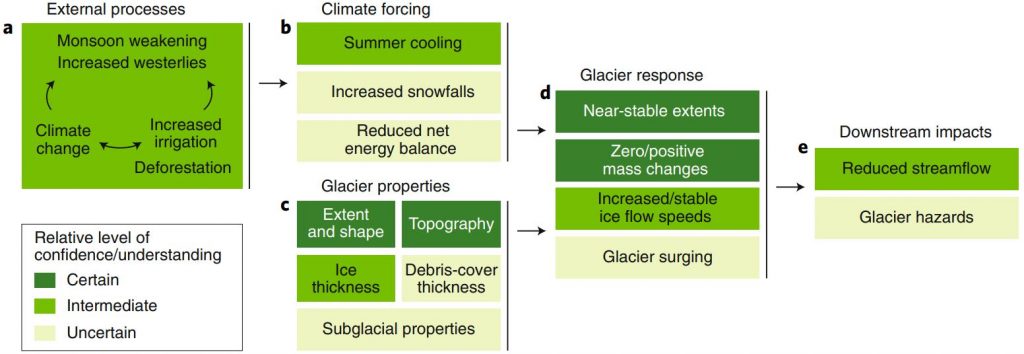The world is warming and glaciers around the world are shrinking as a result. Despite this general trend, one region in High Mountain Asia has glaciers that are stable, or even growing. This puzzling behaviour is often referred to as the Karakoram anomaly, named after the Karakoram mountain range where this behaviour was first noted, and it has been a scientific mystery for a number of years.
A group of scientists that are working on this problem, led by ETH’s Daniel Farinotti and including Walter and Remco from our group, has now summarized our knowledge about the Karakoram anomaly in a paper published in Nature Geoscience. It includes a description of the history of the problem, our current understanding of the possible causes of the anomaly, and systematic suggestions for how new measurements and modelling can help us to finally solve the mystery of Asia’s growing glaciers.

Reference
Farinotti, Daniel, Walter W. Immerzeel, Remco J. de Kok, Duncan J. Quincey, and Amaury Dehecq. 2020. “Manifestations and Mechanisms of the Karakoram Glacier Anomaly.” Nature Geoscience 13 (1): 8–16. https://doi.org/10.1038/s41561-019-0513-5.




